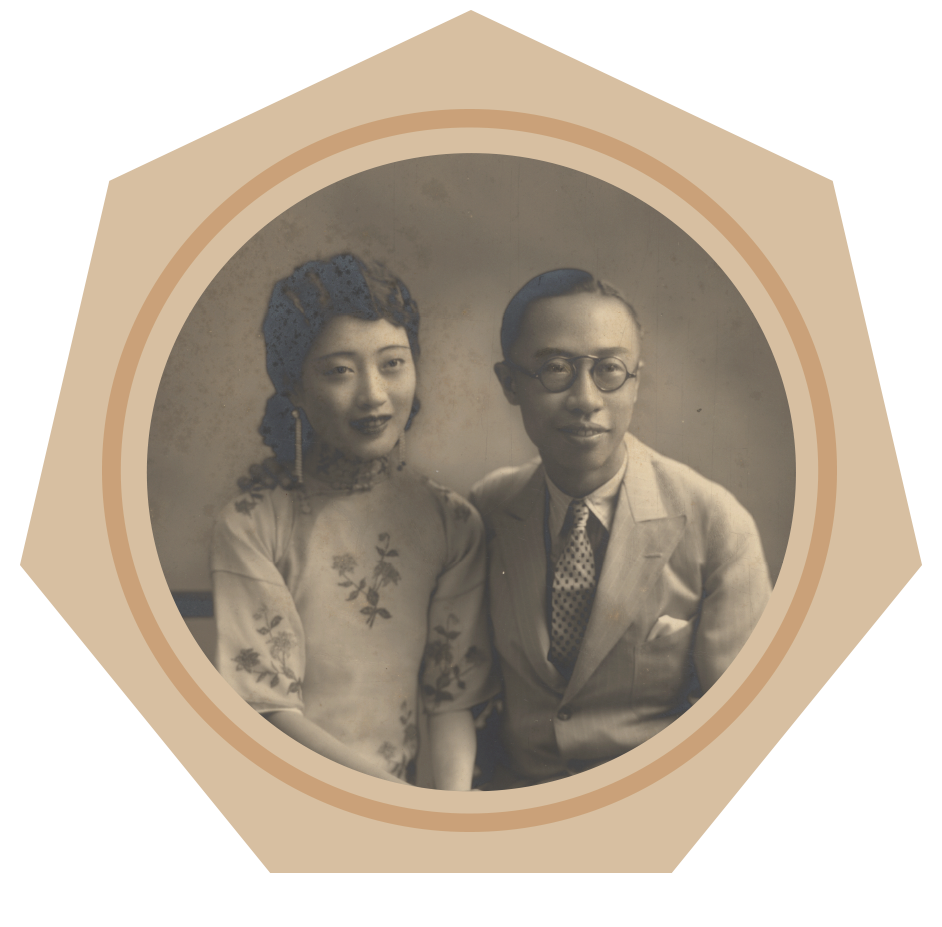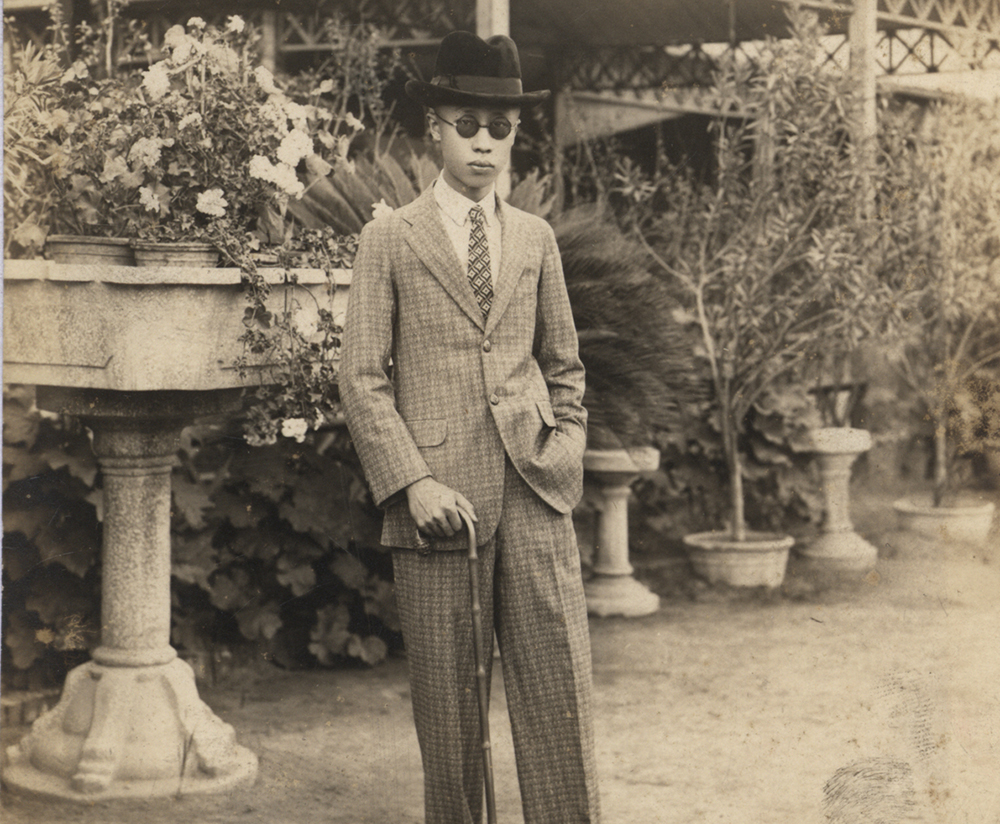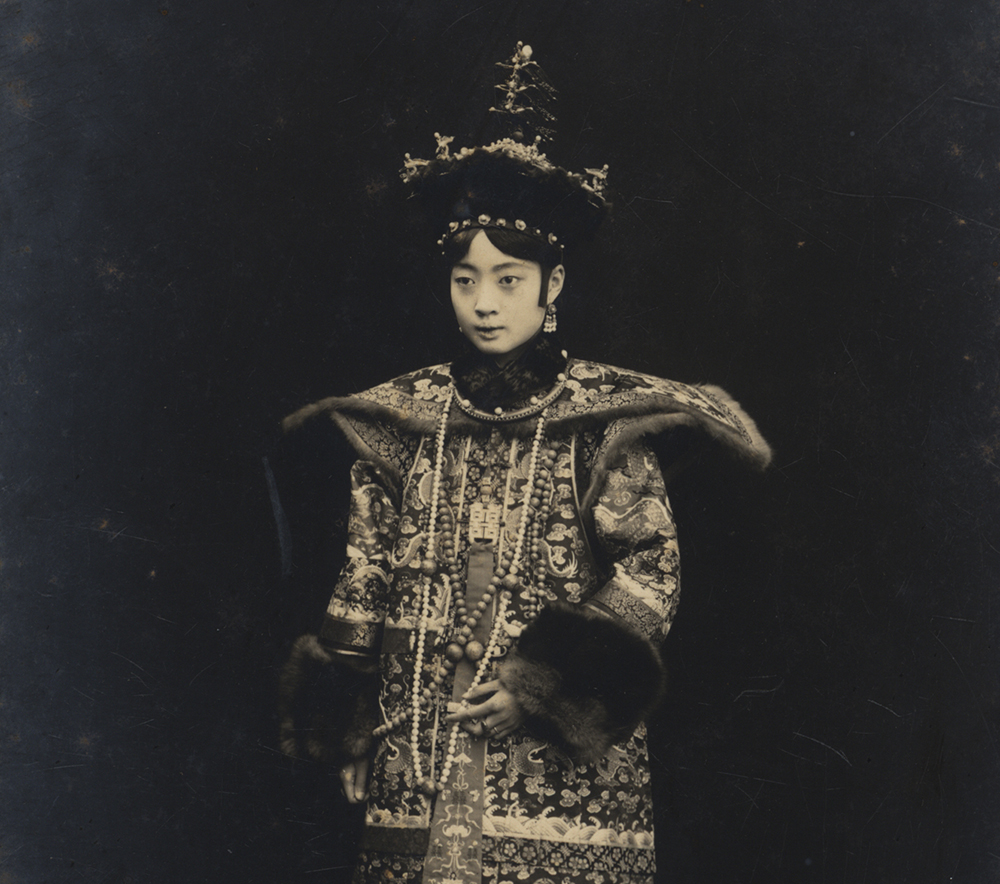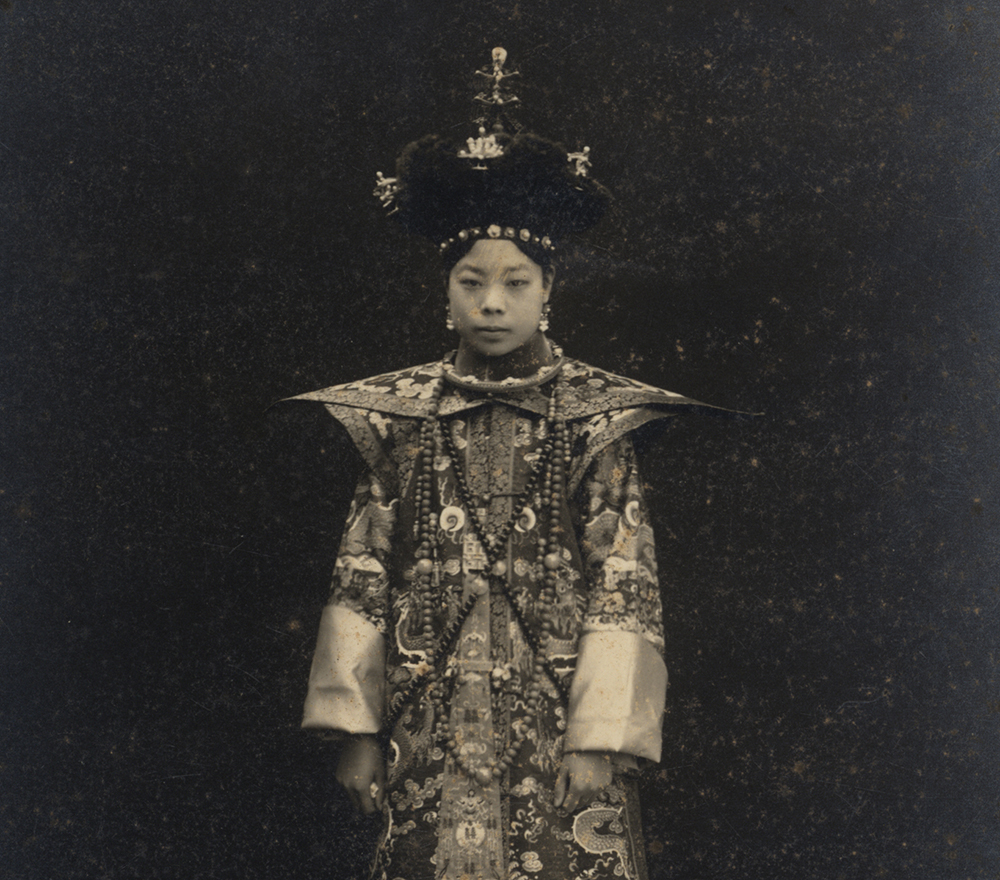Most existing portraits of Chinese emperors and empresses were rendered by imperial court painters. However, the authenticity of such representation is dubious, as many made-up works by artists who had never met their subjects in person do exist. The Qing imperial household embraced photography with excitement after its introduction, and photos portraying its members and their lives are therefore large in number. The last emperor Puyi (1906-1967) was a fervent fan of photography in particular, and had left a complete archive of photographs documenting moments and events throughout the course of his life: from his ascendancy to the throne at the age of 3 to his abdication at the age of 6, from his adolescent youth to his stately marriage at the age of 17, and from his little court in the Forbidden City to his stay in Tianjin. It is justifiable to say that Puyi was the only emperor in the history of China who had kept a journal of his life with photographs.
Intrigued by Puyi's enthusiasm, Empress Wanrong (1906-1946) and Consort Shu Wenxiu (1909-1953) started to take an interest in photography as well, and they studied the craft till they finally learned the technique and could take photographs on their own without professional assistance. Here in this section the last emperor and empress are stripped of the awe-striking mystique, and the images faithfully deliver the true faces of their life in court, as well as their activities after they had been evicted from the Forbidden City.
The Last Emperor Puyi
- 1920 's
- Courtesy of the Palace Museum, Beijing
The last emperor Puyi (1906-1967, r. 1909-1911) was the tenth emperor after the conquest of China by the Manchus. The name of his reign was Xuantong, and he inherited the throne at the age of three and ruled for only three years. His abdication at the age of six came as a result of the Xinhai Revolution of 1911. Under the provisions of the Articles of Favorable Treatment of the Qing Imperial Household reached between the Qing imperial court and the government of the Republic, Puyi was still able to retain his title as the emperor despite the abdication and was permitted to reside temporarily in the Forbidden City. He lived there until being expelled in 1924.
Among the portraits of Qing emperors that have survived the ages, those of Puyi are the largest in number and the most diverse in terms of contents. The majority of these portraits were taken and preserved in the form of photographs, which were vastly popular during his era. The images include pictures of Puyi as a child dressed in court attire, of him with crew cut after the removal of his queue, of him wearing eyeglasses at the age of 16 due to nearsightedness, of him dressed in Western-style outfit in imitation of his tutor Reginald Fleming Johnston (1874-1938), and of him in official military uniform. In these pictures, the young emperor Puyi appears calm and composed, emitting the ambience of a cultured gentleman. However, he had an active and outgoing personality and did not like being restrained. His daily life comprised of different types of games and leisure activities, and his involvements in these events were faithfully recorded through the lens of cameras. These images bear witness to the details of the last emperor's life, from his days as a child to his adulthood.
The Last Empress Wanrong
- 1922
- Courtesy of the Palace Museum, Beijing
Wanrong (1906-1946), lineage name Gobulo, courtesy name Muhong, and pseudonym Zhilian, belonged to the Daur clan, and was a member of the Manchu Plain White Banner. Her father was Rongyuan, Head of the Imperial Household Department. Her stepmother was Hengxiang, the second wife of Rongyuan and the younger daughter of Yulang (1864-1922). Wanrong received good education during her childhood, and was well-versed in arts spanning lute-playing, chess, calligraphy, and painting. She also enrolled in an American missionary school in Tianjin, becoming highly interested in Western culture, and had a personal preference in Western cuisine and jazz music. She was a lady influenced by both Chinese and Western cultures. In 1921, she was officially selected as the emperor. The imperial marriage was conducted the following year. After her marriage to the emperor, she began her life in the Chuxiugong Palace, the former residence of Empress Dowager Cixi (1835-1908).
Both Puyi and Wanrong were born in the same year. Influenced by Puyi and his love for photography, Wanrong herself also became the subject of many photographs which have remained to this day. In these images, Wanrong appears to be elegant and graceful, boasting attractiveness in both mind and body, as well as exhibiting the unique qualities of an empress. During her days in the Forbidden City, her life was exciting and eventful. In her photos taken with Puyi, Wanrong's expression tells of days characterized by joy and happiness. In 1924 during their stay in Tianjin, the relationship between the couple gradually became cold and distant as Puyi devoted himself to the effort of restoring the Qing imperial regime. With her life out of focus and feeling empty inside, Wanrong began smoking opium. The drug addiction remained with her even in her last days.
The Last Imperial Consort Wenxiu
- 1922
- Courtesy of the Palace Museum, Beijing
Wenxiu (1909-1953), courtesy name Huixin and self-chosen pseudonym Ailian, belonged to the Mongolian Erdet clan and a member of the Manchu Bordered Yellow Banner. Her father was Duangong (1852-1908) and her mother Lady Jiang. She also had a sister by the name of Wenshan. During her childhood, Wenxiu had the opportunity to enroll and study in school, and was given the name Fu Yufang. Her academic performance was outstanding, shedding light upon her promising potentials.
In 1922 Puyi's imperial marriage took place. He chose Wanrong as the empress and Wenxiu the imperial consort. However, the relationship between Wenxiu and Puyi was far from smooth. In 1924, Puyi was expelled from the Forbidden City and relocated to Tianjin. During this period, the feeling shared between the imperial consort and Puyi could be described as cold and indifferent. On August 25 in 1931, at the encouragement and support of her younger sister Wenshan, the 22-year-old Wenxiu asked her husband for a divorce. This was the first-time-ever for such incident to take place in the long history of Chinese imperial consort system. The news resulted in a nationwide uproar at the time. The event also demonstrated Wenxiu's personal courage and determination by breaking away from the bonds of tradition in fighting for her own rights.
